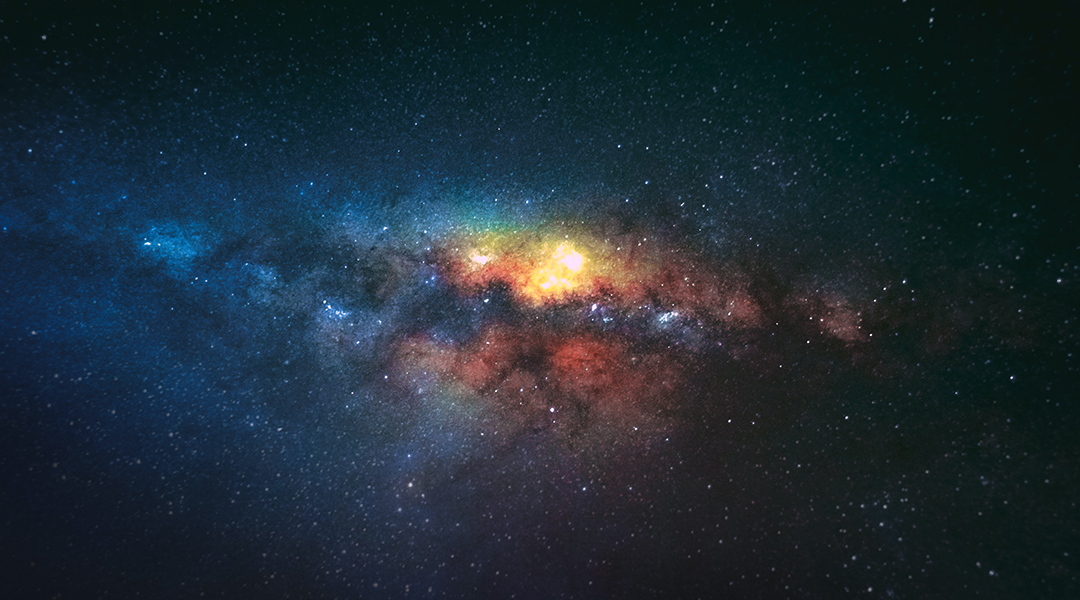Our understanding of the Universe’s evolution relies on Einstein’s general theory of relativity, which treats the force of gravity as a deformation of spacetime, as well as the Standard Model of Elementary Particles that describes fundamental interactions between them such as the strong, weak, and electromagnetic forces.
According to the Standard Model of Cosmology based on these theories, the Universe was born in the Big Bang approximately 13.8 billion years ago, and since then it has been undergoing an expansion driven by the energy of ordinary matter and radiation as well as unknown entities scientists have dubbed dark matter and dark energy, whose nature has not yet been uncovered.
Although this model has successfully explained many cosmological phenomena, from the nature of supernova explosions to the formation of stars, researchers are continually pushing its boundaries, testing its accuracy through increasingly precise astronomical observations. As with any theory, the Standard Model of Cosmology is an approximation (albeit a correct one), and at certain scales, times, or densities of matter, it loses its validity.
Comparing real observations with theory
In a study published in the Monthly Notices of the Royal Astronomical Society, researchers led by Stanford physics graduate student Elise Darragh-Ford sought to test the Cosmological Model by measuring the distribution of matter in galaxy clusters — structures composed of hundreds to thousands of galaxies that are bound together by gravity. By comparing these observations with predictions made by the Cosmological Model, the team could verify its legitimacy.
In their paper, the team analyzed X-ray emissions from a number of galaxy clusters. X-rays are of interest to astrophysicists as this type of short-wave electromagnetic radiation makes up a significant portion of the total radiation emitted by galaxy clusters. More specifically, the X-rays are produced by ultra hot intergalactic gases that typically make up about 10% of the total mass of a cluster — stars and planets only account for about 1% of the whole matter content, with the rest of the mass hypothetically being dark matter.
However, obtaining information about the structure of a galaxy cluster from its X-ray emissions is most reliably done if the cluster has “relaxed” to a near-stationary state where the pressure of intergalactic gas is balanced by the gravitational attraction of the whole cluster. This is because only in these scenarios is it possible to derive the distribution of all types of matter from the distribution of intergalactic gas alone.
Not all clusters exist in this state, so for the current study, the scientists first needed to isolate only those that would provide the viable information. To do this, they turned to computer modeling of the evolution of clusters, which makes it possible to simulate physical processes that in reality take millions or even billions of years to occur.
For their simulated data, the team used the Three Hundred Project, a multi-institutional initiative that aims to create a large data set of simulated galaxy clusters. Within its library exist hundreds of simulated clusters, some of which are in a relaxed state, and by analyzing the X-ray emission from this type of modeled cluster, the researchers were able to identify its characteristic features which they carried over to observations of real galaxy clusters.
An agreement
The data they studied was collected by NASA’s space-based Chandra X-ray Observatory, which had been used to observed hundreds of galaxy clusters. From the properties of the X-ray emissions observed by Chandra from these chosen clusters, the scientists were able to deduce the distribution of matter within them, and compared the results with those predicted by the Standard Model of Cosmology. What they found was an agreement between the two.
To be precise, the researchers tested the theoretically predicted relationships between cluster mass, the concentration of matter at their center and their age. “The measured relationships agree extremely well between observation and theory, providing strong support for the [Standard Model of Cosmology],” said Darragh-Ford in a press release.
Although their study confirmed existing theory, the scientists are not going to stop here. They expect that the planned improvement of the simulation accuracy and expanding the set of generated clusters will make the computer results even more reliable. At the same time, future X-ray telescopes, such as the European Space Agency’s ATHENA satellite, will improve the accuracy of observations, allowing theoretical predictions to be compared with empirical data with even greater precision.
Reference: Elise Darragh-Ford et al., The Concentration–Mass relation of massive, dynamically relaxed galaxy clusters: agreement between observations and ΛCDM simulations, Monthly Notices of the Royal Astronomical Society (2023), DOI: 10.1093/mnras/stad585
Feature image credit: Cerqueira on Unsplash

















